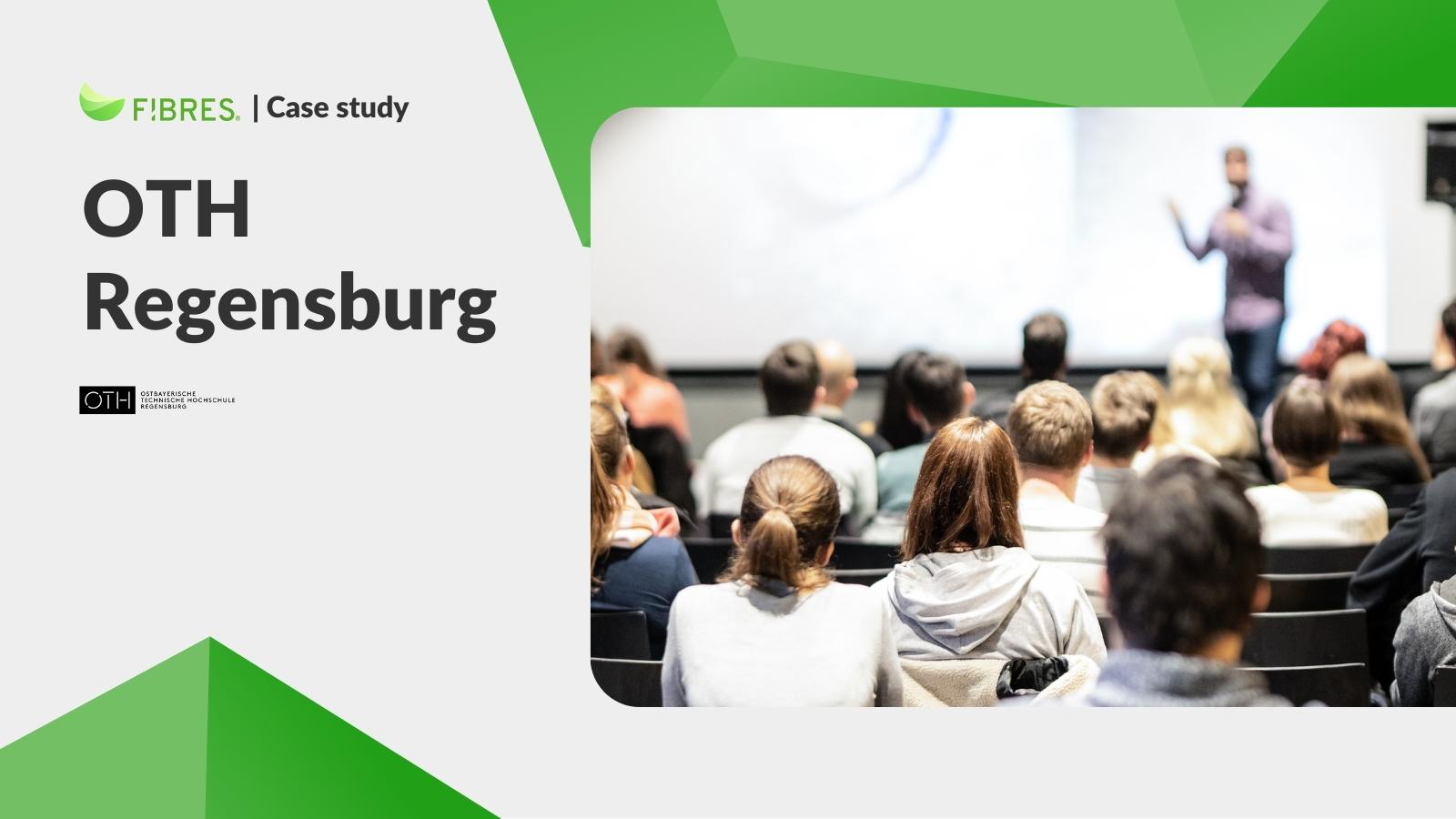Using foresight to come up with an unforeseen business idea

How to induce creative power amongst students looking to create the next big thing? This was the challenge faced by two guest lecturers teaching a course on innovation management. The solution? Introducing the students to selected foresight methodologies.
In summary
- Technical university of applied sciences located in southern Germany. Has used FIBRES since 2022 as part of innovation course
- Students used FIBRES to collect and analyze signals relevant for coming up with a new business idea
- Findings were also cross-referenced with megatrends to ensure relevance
In their day jobs, Joris Fokkelman and Thomas Gallner, Head of Thermal Management at Vitesco and Head of Future at Cariad, respectively, work closely with innovation and foresight topics. In this story, Joris shares how working with a foresight tool worked out for students in their innovation class.
At OTH Regensburg, students of the mathematics and informatics faculty have the opportunity select a course on innovation management, taught by myself and my colleague Thomas Gallner, two guest lecturers.
In the era of software engineering, anyone can come up with a good business idea and start their own venture. Our course provides useful information on markets, trends and opportunities as well as insights on idea management, competences and roadmapping.
This year, the course exam consisted of making a pitch about a startup idea. But before zeroing in on a single idea, we wanted to broaden our students' horizons. The challenge for us was to induce enough creative power among the students in such a short timeframe. Clearly, with just one course, we couldn't expect students to become masters of innovation.
Since innovation is largely about coming up with the right idea at the right time, we wanted to familiarize the students with some foresight methodologies – more specifically signal sourcing, clustering, and sense-making.
We asked the students to collect two types of information: first, information about problems that they perceive in the world and where they are motivated to find solutions (e.g. missing digitalization in certain areas of life), and secondly, information about their own strengths and competences (e.g. programming knowledge).
We believe that ideation and innovation thrives at the cross-section of these two information types. You have the best chances at success when you are motivated to create a solution where your competences are utilized to solve a problem that you have.
This is where FIBRES played a key role. Thanks to their free plan for not-for-profit universities, we were able to get temporary licenses for students in our class. It provided the students with a place to save their findings on their perceived problems and strengths, and to organize those findings.
Stop streaming, start accumulating
Don't let important nuggets of wisdom slip through your fingers anymore. Begin gathering knowledge in a shared futures repository with your organization, enhanced by AI.
We introduced the FIBRES tool when discussing the large Kondratiev waves – the idea that innovation occurs at alternating intervals of high growth and relatively slow growth – and the current megatrends of the world.
In their FIBRES accounts, each student had access to a pre-populated trend radar. We encouraged the students to connect their signals to these megatrends. With this data, the students could see how their personal observations fit into the system: their signals can be part of global trends.
With a foresight tool like FIBRES, it was also possible to see if their business ideas have a global market impact or if it's only a niche topic.
The tool also helped the students spot completely new things. FIBRES has a built-in database called FIBRESEED that offers a good starting point when you don’t have so much inspiration of your own, or when you want to dive deeper into a topic you've already identified.
For the next edition of the course, we will make the creation of a trend radar one of the mandatory deliverables. This will help us to check whether the students are on the right track when the course is half-way. Working out the further details of the business idea and the pitch are then the logical next steps."
Complimentary plans for educational purposes
Educators of foresight topics use FIBRES for free. Enhance your foresight class with a purpose-built foresight tool.
Milla Rogge is head of marketing at FIBRES. She's excited to learn foresight best practices from the top organizations in the world already running their own foresight workflows and to share those learnings with others.
Stay in the loop
Get our latest foresight tips delivered straight to your inbox. You may unsubscribe from these communications at any time.